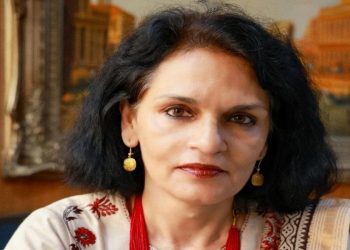Nealesh Dalal, Founder of JD School of Design and Design Gurukul, and Managing Trustee of JD Institute of Fashion Technology, has been at the forefront of shaping design education in India. With over two decades of experience, he has witnessed the evolution of design from a niche discipline to a mainstream career choice. In this candid interview, he shares his vision on experiential learning, sustainability, global exposure, and the role of ethics and empathy in shaping the designers of tomorrow.
Q. How have you seen the perception of design evolve over the last two decades in India?
Over the past two decades, there has been a significant shift in how design is perceived in India. The youth today are increasingly serious and conscious about their choices. They prioritise comfort and continuously explore new textures and innovative ways to express their individual style. This evolution reflects a broader cultural shift towards personal identity and global design sensibilities.
Q. What inspired the creation of JD School of Design and Design Gurukul, and how do these institutions stand apart in the competitive education ecosystem?
The JD School of Design was created to promote valid partnerships with state and deemed-to-be universities to provide research-oriented and industry-centric courses. The design field is vast, and we aim to bring in programmes that equip the youth with future-ready skills. For example, we are soon launching the “Digital Design Experience”—a one-of-a-kind programme in India—centred on human-first and AI-supported design thinking. This makes our institutions innovation-driven, forward-looking spaces for design learning.
Q. Could you elaborate on how the experiential learning approach shapes your academic philosophy and curriculum development?
Our educational philosophy is deeply rooted in experiential learning. It is designed to align with the changing requirements of the industry. We develop our curriculum by incorporating real-world issues, ensuring students receive the right inputs and skill sets. This helps them transition seamlessly into diverse fields where design plays a central role.
Q. In what ways has edutech transformed teaching and learning at your institutions, especially in creative and design-centric courses?
In the world of design, particularly in a highly creative country like India, technology is a powerful enabler. It enhances our students’ ability to transform imagination into reality. While creativity remains central, edutech allows students to prototype, experiment, and innovate more effectively.
Q. How do you ensure design, technology, and sustainability elements are integrated effectively into your educational framework?
We constantly work to integrate design, technology, and sustainability—the three pillars of our academic programmes. We believe in equipping students not only to create but to create responsibly, with an emphasis on the environment, innovation, and long-term value.
Q. How do you provide international exposure and cross-cultural learning to your students?
We promote a global outlook through initiatives such as inviting international faculty members for workshops and guest lectures. These interactions expose students to different design practices and cross-cultural sensitivities, broadening their creative vocabulary and professional horizon.
Q. How do you ensure your graduates are not just employable but industry-ready and entrepreneurial?
We maintain strong connections with industry experts and incorporate their feedback into our curriculum. Students are prepared through internships, industry projects, mentoring sessions, and start-up incubation guidance. Our aim is to nurture confident professionals capable of leading and innovating in the design sector.
Q. What is your approach towards upskilling faculty to stay relevant in this era of fast-paced design and technology advancements?
Learning is a continuous journey, and this applies to faculty as well. We engage our educators through regular industry interaction, collaborative research, and participation in international design forums. This ensures they stay updated with current trends and apply them in the classroom, creating dynamic learning experiences.
Q. How do you define “holistic education” in the context of design, and what are its essential components in your model?
Holistic design education nurtures the student’s mind, heart, and hands. Technical skills, critical thinking, emotional intelligence, and cultural sensitivity are integral to our model. We aim to develop not only competent designers but also responsible individuals aware of the social and environmental consequences of their work.
Q. What role do ethics, empathy, and emotional intelligence play in the making of a good designer, according to you?
Ethics, empathy, and emotional intelligence are essential. A good designer must empathise with users’ needs, possess emotional intelligence to manage teamwork, and act ethically to make responsible decisions. These values help ensure design solutions are human-centred, inclusive, and sustainable—qualities crucial in today’s world.
Q. How can design education contribute to solving some of the pressing global issues such as climate change or inclusive development?
Design education must take the lead in addressing global challenges. At our institutions, students are encouraged to experiment with sustainable materials, upcycling, and innovative processes that minimise environmental harm. Design is not limited to fashion; it encompasses furniture, jewellery, and beyond. Our focus remains on sustainability, innovation, and creative repurposing of materials to build a better world.
Q. What advice would you give to young aspirants who want to pursue careers in design but come from non-traditional or rural backgrounds?
I would advise them to stay curious and confident. Creativity is not confined to cities or schools—it stems from observation, culture, and lived experience. With proper mentorship, passion, and access to resources, anyone can excel in design. We are committed to making design education more accessible and inclusive so that every talented individual has an equal opportunity to shine.
Nealesh Dalal’s vision for design education is firmly anchored in innovation, sustainability, and inclusivity. By combining experiential learning with global exposure and ethical responsibility, his institutions aim to create designers who are not only industry-ready but also conscious contributors to society. His belief that design must “lead the way in addressing global challenges” underlines the transformative role education can play in shaping a more sustainable and empathetic future.



























































